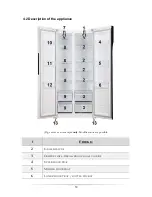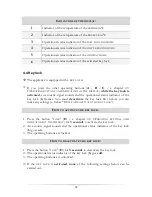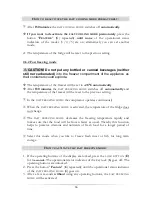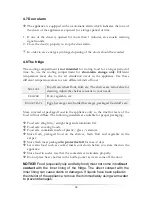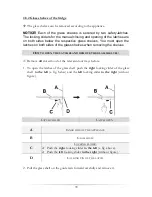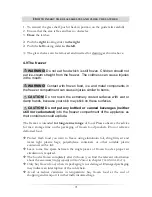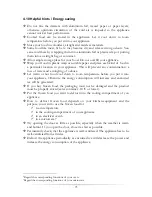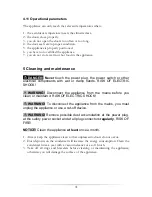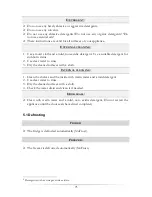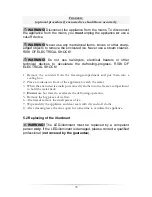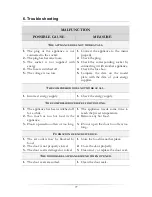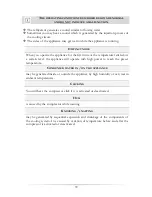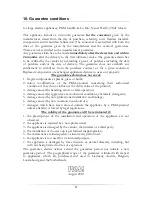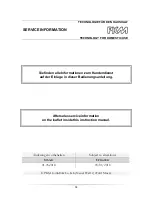
73
4.10 Helpful hints / Energy saving
Do not line the drawers with aluminium foil, waxed paper or paper layers;
otherwise optimum circulation of the cold air is impeded so the appliance
cannot work at best performance.
Cooked food can be stored in the appliance. Let it cool down to room
temperature before you put it into your appliance.
Store your food in colourless, airtight and tasteless materials.
Some food like meat, fish etc. may become dry and release strong odours. You
can avoid these by wrapping them into aluminium foil or plastic wrap or putting
them into an airtight bag or container.
Allow ample storage place for your food. Do not overfill your appliance.
Wrap your food in plastic wrap or suitable paper and place each kind of food in
a particular location in your appliance. This will prevent any contamination, a
loss of water and a mingling of odours.
Let warm or hot food cool down to room temperature before you put it into
your appliance. Otherwise the energy consumption will increase and encrusted
ice will be generated.
If you buy frozen food, the packaging must not be damaged and the product
must be properly stored (sales container -18
0
C or lower).
Put the frozen food you want to defrost into the cooling-compartment of you
appliance.
How to defrost frozen food depends on your kitchen-equipment and the
purpose, you want to use the frozen food for.
room temperature
in the cooling-compartment of your appliance
in an electrical oven6
in a microwave7
Try opening the door as little as possible, especially when the weather is warm
and humid. If you open the door, close it as fast as possible.
Permanently check, that the appliance is well-ventilated. The appliance has to be
well-ventilated from all sides.
Defrost the appliance periodically as encrusted ice will decrease the power and
increase the energy consumption of the appliance.
6
Regard the corresponding functions of your oven.
7
Regard the corresponding functions of your microwave.

